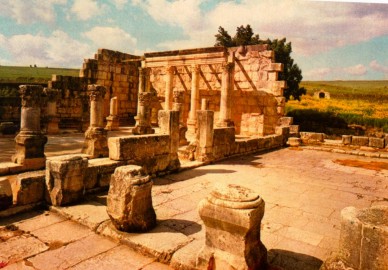|
Community
that suffered the loss of the Jerusalem Temple and codified the
oral tradition in the Mishnah and Talmud.
|
 |
|
4th-century
synagogue in Capernaum.
|
At the beginning
of the first century A.D. there were Jewish communities in towns and cities
across the Roman Empire. One factor that shaped Jewish identity was the
Torah or Law of Moses, which prescribed distinctive practices like circumcision,
eating foods that were clean or "kosher," and refraining from work on
the Sabbath day. A second factor in Jewish identity was the Temple in
Jerusalem, where sacrifices were
offered. In A.D. 70 the Romans destroyed Jerusalem and its Temple in an
effort to suppress a Jewish revolt. Leading rabbis dealt with the loss
of the Temple by emphasizing the study of the Torah, ethical behavior,
and the celebration of Jewish festivals in homes. Synagogues were local
centers for prayer and the study of the Torah. In the second century,
Jewish traditions that had been handed down orally were put into a written
form known as the Mishnah. In the third through fifth centuries leading
rabbis formulated interpretations of this tradition. Together, the Mishnah
and the comments of the later rabbis constitute the Talmud, the core collection
of teachings that would be essential to the
Judaism of the medieval period and down to the present.
|